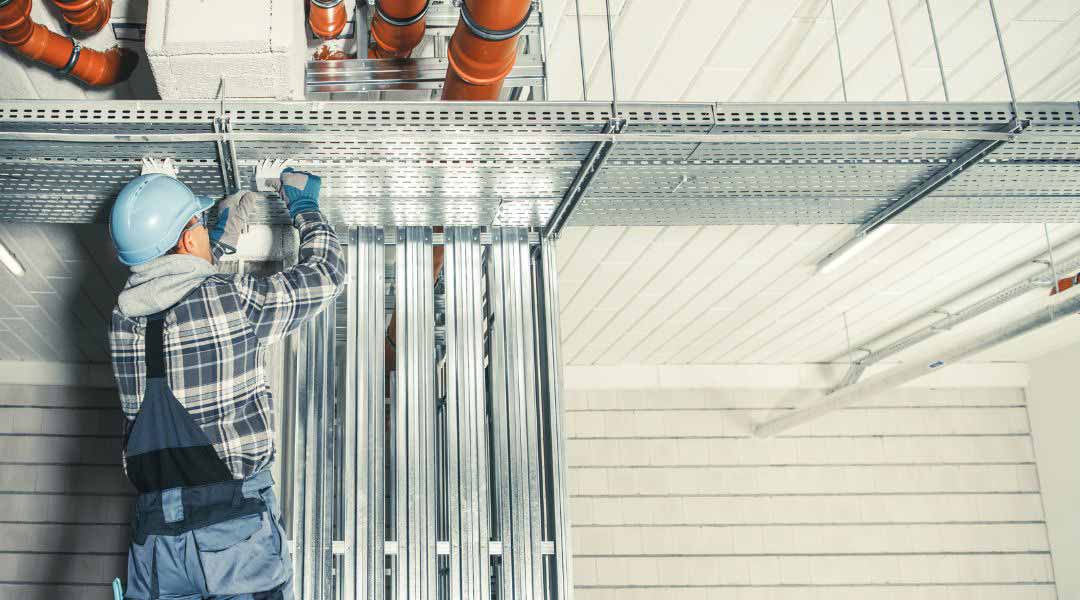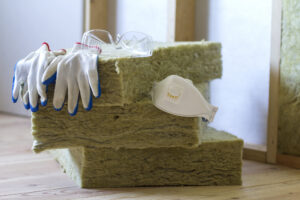
How Can You Tell if Your Popcorn Ceiling Has Asbestos?
Are you worried that your popcorn ceiling could contain asbestos? If so, it’s essential to identify if it has any hazardous fibers. Even though most ceilings from 1930 to 1980 had high levels of asbestos, modern ones have significantly lower amounts or none.
With proper knowledge and safety precautions on telling if your popcorn ceiling contains asbestos, you can mitigate potential risks involved with removal. Here are key tips for inspecting an existing ceiling safely and accurately without putting yourself at risk.
Identifying Asbestos-Containing Popcorn Ceilings
It’s important to be aware if your popcorn ceiling contains asbestos. Asbestos was used often in construction before the 1980s, and it can still be found today, but now laws have been put in place regarding its removal or containment. Knowing how to identify whether your popcorn ceiling has asbestos is incredibly important for keeping you and those around you safe from potential health risks associated with exposure to this mineral fiber material.
To accurately determine whether your ceiling has asbestos requires a professional lab test; however, visual cues may help suggest the possibility that materials contain it.
Visual Cues to Look Out For
You may also be able to tell whether your popcorn ceiling contains asbestos simply by looking at it. If the material appears glossy or shiny, has a fibrous texture, and is yellowish-brown in color, chances are you have an Asbestos Containing Material (ACM). Furthermore, if the ACMs were applied before 1981, then there’s a good chance they contain asbestos fibers, as that year was when its use had been outlawed for manufacturing purposes.
Moreover, try examining any underlying layers of paint; peeling can indicate the presence of asbestos particles beneath them. Get professional testing done; this will confirm with certainty whether or not the materials tested indeed contained or contain hazardous substances such as asbestos.
Dangers of Disturbing Asbestos Material
It’s important to understand the dangers of disturbing asbestos material present in a popcorn ceiling and how it can cause serious harm. If you come into contact with any particles, they’re easily inhaled or ingested, which places your health at risk. Inhalation of these particles can increase the risk of mesothelioma, lung cancer, asbestosis, and other illnesses associated with exposure.
Furthermore, when disturbed, this type of insulation has the potential to spread throughout the home. It can travel through air conditioning vents and other passageways. Containment can prove difficult if professional removal is not done correctly by certified professionals. These professionals need to be equipped with protective gear and safety equipment for successful containment.
Therefore, it’s best practice for homeowners who think that their popcorn ceilings may contain asbestos materials to seek confirmation via testing from accredited laboratories before attempting DIY action to remove them, as contamination won’t be avoidable without proper techniques. Due diligence should always apply here.
Professional Testing for Confirmation
Once you have identified the material in your ceiling, getting professional confirmation is advisable. Testing for asbestos can be conducted by a certified specialist using advanced equipment and collecting and analyzing samples from the area that needs inspection.
The test results will provide definitive information on whether or not such material contains asbestos and if further action needs to be taken. In some cases, if necessary, removal may involve additional measures, such as sealing off areas with plastic sheets so that fibers cannot escape into surrounding areas during the disposal process. You should hire a qualified contractor who specializes in dealing with this type of issue safely before proceeding ahead with demolition or repair work related to popcorn ceilings containing potentially hazardous substances.
Removal by a Certified Contractor
If there’s an indication that your popcorn ceiling may contain asbestos, it’s essential to take action. You should protect yourself and the people living in your home by seeking professional help.
Make sure you hire a certified contractor who specializes in handling asbestos coverings removal so they can do the job safely and correctly. The certified contractor will test samples of material from as many locations on the surface as possible for confirmation before beginning any work. They also know how to properly dispose of hazardous materials once removed, according to regulations set forth by local health authorities or environmental agencies, depending on where you reside.
Proper Cleanup After Removal
Proper cleanup is crucial once you’ve had a professional assess your popcorn ceiling. Removing asbestos-containing material requires special attention and care, as it can spread into the air if not dealt with properly.
You’ll need to make sure that any debris or dust created during removal has been cleared out of the room in which it was attempted. Make sure that all materials used for cleaning, such as gloves and latex masks, are disposed of carefully so no particles become airborne accidentally when disposing of them outside your home. All surfaces should be wiped down multiple times until they’re completely free from any traces of remaining debris, including floors, furniture, and countertops near where the work took place.
It’s important to know if your popcorn ceiling has asbestos in it. Knowing the age of your home and learning about how the paint was applied will help you determine whether further testing for asbestos is necessary.
You can also look out for certain characteristics such as texture, color, or sound when trying to identify an association with possible products containing asbestos fibers. Finally, hiring a professional licensed contractor like CVE Corp with experience removing and disposing of materials that contain asbestos offers peace of mind, especially when working on areas that may be more difficult to access than regular ceilings. By taking these precautionary steps, you can ensure any potential health risks from exposure are eliminated quickly and safely.



